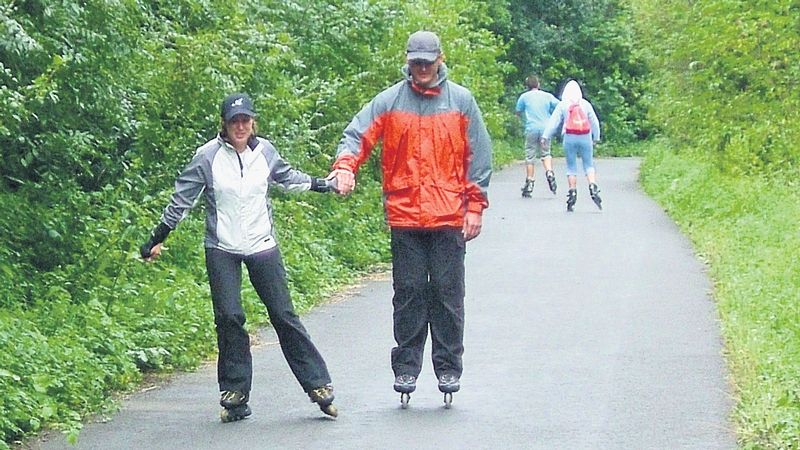There are two main reasons. So far, there are only a few areas and tracks that have optimal conditions and maximum safety. In addition, followers of this sport often ride without protective equipment. And beginners in particular are usually unaware of the dangers that await them.
Fourteen-year-old David was taken to the surgical ambulance at Prague’s Motola University Hospital by his father. His son had received the skates for his report card and was completely obsessed with them. Seeing his enthusiasm, his father bought him knee pads, elbow pads, gloves, and a helmet.
David mostly rode in the new parking lot next to their block of flats and on the paths in the garden. Be careful at first. Before he learns to keep his balance, he sometimes falls. However, he is able to glide well on ice and thanks to that he soon mastered inline.
A ruined summer
Due to the heat, he was not wearing a helmet and pads that day. While going downhill fast on the asphalt road, he hit a gravel. This was followed by a loss of balance and falling on the edge of the concrete road in the sandpit area.
He broke his right wrist and suffered a concussion, fortunately a mild one. He has bruises on his hands, feet and especially his face. The doctors put the fracture in a cast for six weeks. Then he will have 2 to 3 months of rehabilitation. He will not enjoy much of this summer. But he is very lucky that it was not worse. Dozens of doctors treat falls like his.
“Abrasions to the knees, elbows, palms and face, but also wrist fractures, ligament damage and head injuries, in our experience, are the most common accidents that occur among inline skaters,” says doctor. MD Veronika Benešová, CSc. from the Center for Injury Prevention in Prague. “Head injuries tend to be the most serious, accounting for 20% of cases.”
According to experts, fairly advanced beginners have the most injuries. They give the deceptive impression that they already know how to skate, and sometimes they even want to show off. However, they lack experience. They do not know what threatens them where, what to look out for, and what level of risk is reasonable.
How to best handle it
“Those who don’t fall are riding below their abilities,” inline skating followers sometimes joke. Anyone who wants to enjoy this sport at its best will find plenty of useful advice on the website www.svetkolecek.cz.
Rainfall on the bike path
Eighteen-year-old Ondra wanted to try riding down the bike path to the river. But he overdid it a bit. Centrifugal force carried him in the opposite direction as he turned. He was no longer able to avoid the oncoming cyclist. He broke both of his arms when he collided with him. In addition, he suffered a concussion despite wearing a helmet. The cyclist fared a little better. He didn’t break anything, he just got bruises, bruises and only a mild concussion.
Inline skaters often ride on paved bike paths. This is a learned and enjoyable practice. If cyclists and skaters follow reasonable rules and respect each other. Otherwise, there is a risk of clashes. Usually this ends worse for the skater. But it is also not fun for the cyclist. They fall from a height and everything falls on their head.
Money from health insurance companies
“More advanced skaters often try acrobatic elements,” Professor Benešová said. “If they don’t manage it, they risk very serious injuries. The worst is a severe bruise on the head or spine.”
How risky it is to fall on in-line skates, especially on the back, said the head of the Trauma Surgery Clinic in Brno, doc. MD Michal Mašek, CSc. At a press conference, he mentioned the case of a twenty-five-year-old woman who fell headlong on a bike path in Brno. Despite wearing a helmet, she died from her injuries.
This does not mean that helmets are useless. It means that people should drive wisely and reduce the risk of falling or its consequences as much as possible. Therefore, some health insurance companies, for example VZP, contribute to the purchase of personal protective equipment by people, which is appropriate to have when practicing adrenaline sports (learn more at www.neriskujto.cz ).
It is also no coincidence that leading athletes who practice inline skating, skateboarding, BMX, dirt bikes and other similar sports go around schools and show schoolchildren not only what they can do, but also what is at stake in these sports and how dangerous situations should be avoided. If you also want to welcome them to your school, try to make an agreement with the organizers through the mentioned address www.neriskujto.cz.
The increasing number of injuries in children and adolescents is also due to their physical condition and dexterity decreasing due to sitting too long in front of computers and televisions at school and at home. On the other hand, their interest in extreme sports and adrenaline is increasing.
Skating takes place in the centers of a number of cities
Hundreds of in-line skaters set off from Prague’s Palacký náměstí along the Vltava for a night ride through Prague. Among them was world speed skating record holder Martina Sáblíková. She came alone because the event seemed like a good joke and a fun experience.
The organizers of the night skating managed to close the road in the middle of the track, so that the skaters did not have to transfer between cars. They had a path to themselves.
Among the participants are mothers with baby strollers. Some people who do not have their own skates can borrow them and try skating here. Even with protective equipment. “This is not a race, but a skating event,” said Tomáš Hůlovec as the organizer.
What is the content of the paragraph?
Skaters who ride on good roads during normal traffic often behave like cyclists on these roads. That means they drive on the right. However, according to traffic regulations, they have the status of pedestrians. So they have to drive on the left. On bike paths, they have to stay in their lane and use the lane designated for cyclists only for overtaking.
Adrenaline junkies on the road sometimes cling to semi-trailers or the back of slow-moving trucks to ride. However, just a little bump is enough and they are in danger of falling, which can be very bad even at speeds of 30 to 40 kilometers per hour.

“Unapologetic social media guru. General reader. Incurable pop culture specialist.”







